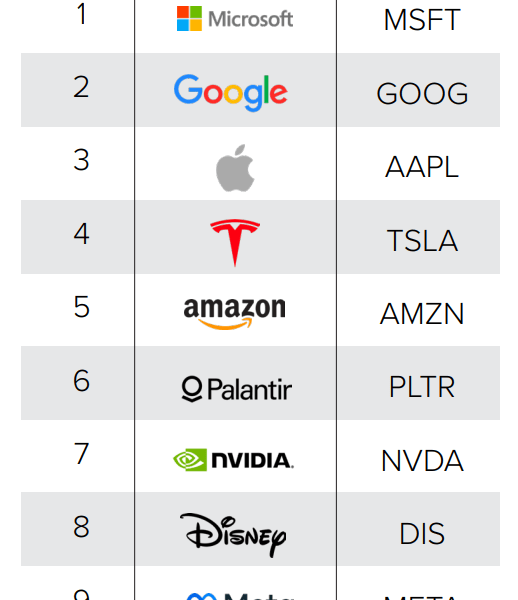The allure of finding incredibly undervalued assets is a siren song that draws many investors towards the world of cheap stocks to buy now in 2024. However, navigating this terrain requires careful consideration and due diligence, as “cheap” doesn’t always equate to “good.” Examining a company’s fundamentals, industry trends, and overall market conditions is paramount to making informed decisions. This article will offer a brief explanation about the landscape of identifying potentially lucrative, yet affordable investment opportunities during the current year, with a focus on avoiding common pitfalls.
Understanding What Makes a Stock “Cheap”
The term “cheap stock” can be misleading. It doesn’t necessarily refer to a company that is performing poorly. Often, it indicates that the stock’s price is low relative to its earnings, book value, or other financial metrics. Here are some key aspects to consider:
- Price-to-Earnings (P/E) Ratio: A lower P/E ratio than its peers in the same industry might suggest undervaluation;
- Price-to-Book (P/B) Ratio: A low P/B ratio could indicate that the market is undervaluing the company’s assets.
- Discounted Cash Flow (DCF) Analysis: This method estimates the intrinsic value of a stock based on its future cash flows.
Factors to Consider Before Investing in Cheap Stocks
Before jumping on the bandwagon of cheap stocks, remember that low prices can often be a symptom of underlying problems. Consider the following:
- Company Fundamentals: Is the company profitable? Is it generating positive cash flow? What is its debt load?
- Industry Outlook: Is the industry experiencing growth or decline? Are there any disruptive technologies on the horizon?
- Management Team: Does the company have a competent and experienced management team?
- Competitive Advantage: Does the company possess a durable competitive advantage that protects it from rivals?
Potential Pitfalls to Avoid
Investing in cheap stocks comes with inherent risks. Be wary of the following:
- Value Traps: A stock that appears cheap based on historical data but continues to decline due to persistent fundamental problems.
- Penny Stocks: Stocks that trade for very low prices and are often highly speculative and volatile.
- Companies on the Brink of Bankruptcy: Ensure the company has enough cash on hand to meet its obligations.
Finding Potential Opportunities in 2024
While past performance is never a guarantee of future results, observing sectors poised for potential growth, or companies undergoing significant restructuring, may reveal potential opportunities for value investors. Always conduct thorough research before committing capital.
Now, let’s delve deeper into actionable strategies for identifying and evaluating potentially undervalued companies. Think of it as sharpening your investor’s toolkit. It’s not just about finding a low price; it’s about discovering a diamond in the rough, a company poised for a turnaround or whose long-term potential is currently underestimated by the market.
Digging Deeper: Beyond the Basic Ratios
While P/E and P/B ratios are excellent starting points, they are just that – starting points. As a mentor, I always encourage a more holistic approach. Look beyond the surface and consider these advanced metrics:
- Enterprise Value to EBITDA (EV/EBITDA): This ratio provides a more comprehensive valuation than P/E, as it considers a company’s debt and cash levels. A low EV/EBITDA compared to its peers could signal undervaluation.
- Free Cash Flow (FCF) Yield: This is the FCF per share divided by the stock price. A high FCF yield suggests the company is generating significant cash, which can be used for reinvestment, dividends, or share buybacks.
- Return on Invested Capital (ROIC): This metric measures how efficiently a company is using its capital to generate profits. A consistently high ROIC indicates a strong competitive advantage.
The Importance of Qualitative Analysis
Numbers tell a story, but they don’t tell the whole story. Don’t underestimate the power of qualitative analysis. Ask yourself:
- What is the company’s competitive landscape? Who are its main competitors, and what are their strengths and weaknesses?
- What are the company’s growth opportunities? Is it expanding into new markets, developing new products, or acquiring other businesses?
- What are the company’s risks? Are there any regulatory issues, economic headwinds, or technological disruptions that could negatively impact its performance?
- What is the quality of the management team? Do they have a proven track record of success? Are they transparent and accountable?
Crafting Your Investment Strategy for Cheap Stocks
Remember, there’s no one-size-fits-all approach to investing. Your strategy should be tailored to your individual risk tolerance, investment goals, and time horizon. Here are a few popular strategies to consider when dealing with undervalued equities:
- Value Investing: This strategy focuses on identifying companies whose stock prices are below their intrinsic value. Value investors often use fundamental analysis to determine a company’s worth and then wait for the market to recognize its potential.
- Turnaround Investing: This strategy involves investing in companies that are facing temporary challenges but have the potential to recover; Turnaround investors often look for companies with strong brands, valuable assets, or new management teams.
- Contrarian Investing: This strategy involves investing in companies that are out of favor with the market. Contrarian investors believe that the market often overreacts to negative news, creating opportunities to buy undervalued stocks.
Finally, diversification is key. Don’t put all your eggs in one basket. Spread your investments across different sectors, industries, and geographies to reduce your overall risk. It is important to remember that while the prospect of cheap stocks may be appealing, a well-researched and diversified portfolio is the cornerstone of long-term investment success.
Let’s move beyond theory and discuss practical steps you can take to begin your search for potentially undervalued gems. Remember, patience and discipline are your allies in this endeavor.
Screening Tools and Resources
Fortunately, you don’t have to sift through thousands of financial statements manually. Numerous screening tools and resources can help you narrow your focus. Here are a few suggestions:
- Financial News Websites: Major financial news outlets like Bloomberg, Reuters, and The Wall Street Journal provide in-depth company profiles, analyst ratings, and market data.
- Stock Screening Websites: Websites like Finviz, StockRover, and TradingView offer powerful screening tools that allow you to filter stocks based on a wide range of criteria, including P/E ratio, P/B ratio, dividend yield, and market capitalization.
- Brokerage Platforms: Many online brokerage platforms offer their own screening tools and research reports.
- Financial Data Providers: Companies like FactSet, Refinitiv, and S&P Capital IQ provide comprehensive financial data and analytics for professional investors.
Setting Up Your Screening Criteria
The key to effective screening is to define your criteria clearly. What are you looking for in a potential investment? Here’s an example of a screening criteria you might use to find cheap stocks:
- P/E Ratio: Less than 15
- P/B Ratio: Less than 1
- Debt-to-Equity Ratio: Less than 0.5
- Positive Free Cash Flow
- Analyst Ratings: “Buy” or “Overweight”
Feel free to adjust these criteria based on your own preferences and investment style. The goal is to create a list of potential candidates that you can then research further.
Performing Due Diligence: The Art of Uncovering Value
Once you have a list of potential candidates, it’s time to roll up your sleeves and perform thorough due diligence. This is where you separate the wheat from the chaff.
- Read the Company’s Financial Statements: This includes the income statement, balance sheet, and cash flow statement. Pay attention to trends, anomalies, and potential red flags.
- Read the Management’s Discussion and Analysis (MD&A): This section of the annual report provides valuable insights into the company’s performance, strategy, and outlook.
- Listen to Earnings Conference Calls: These calls provide an opportunity to hear directly from the company’s management team and ask questions.
- Research the Industry: Understand the industry’s dynamics, competitive landscape, and growth prospects.
- Read Analyst Reports: Analyst reports can provide valuable insights and perspectives on the company and its industry. However, remember that analysts can be wrong, so don’t rely solely on their opinions;
Focus on Sustainable Competitive Advantages
One of the most important things to look for is a sustainable competitive advantage, also known as a “moat.” A moat is a feature that protects a company from its competitors and allows it to earn above-average profits. Some common moats include:
- Brand Recognition: A strong brand can command premium prices and create customer loyalty.
- Network Effects: The value of a product or service increases as more people use it.
- Switching Costs: High switching costs make it difficult for customers to switch to a competitor.
- Cost Advantages: A company may have lower costs than its competitors due to economies of scale, access to cheaper resources, or superior technology.
- Intellectual Property: Patents, trademarks, and copyrights can protect a company’s products and services from competition.
When you find a company with a wide and durable moat, you’ve likely found a potential long-term investment.
Managing Risk and Staying Informed
Investing in even the most promising cheap stocks involves risk. It’s essential to manage risk effectively and stay informed about your investments.
- Set Stop-Loss Orders: A stop-loss order is an instruction to your broker to sell a stock if it falls below a certain price. This can help you limit your losses if the stock price declines unexpectedly.
- Monitor Your Investments Regularly: Keep track of the company’s performance and any news or events that could impact its stock price.
- Rebalance Your Portfolio: Periodically rebalance your portfolio to maintain your desired asset allocation.
- Be Prepared to Sell: Don’t be afraid to sell a stock if the company’s fundamentals deteriorate or if you find a better investment opportunity.
Ultimately, remember that finding cheap stocks is a journey, not a destination. The market is constantly evolving, so you must be willing to adapt your strategy and learn from your mistakes. The search for cheap stocks in 2024 requires diligence, patience, and a healthy dose of skepticism; however, with the right approach, you can uncover potentially lucrative investment opportunities. Happy investing!


